With the recent addition of The Funplex’s Fun in the Sun, the newest roller coaster in Myrtle Beach, we got to thinking about the history of roller coasters in the area. While amusement parks have traditionally been an “afterthought” for many of the area’s 19 million annual tourists, and there aren’t many operating roller coasters in the immediate area today (just five!), roller coasters have actually been a part of Myrtle Beach’s entertainment offerings for 70 years.
1951-1979: The Early Years
As with any historical look back at Myrtle Beach amusement parks, the story begins with The Pavilion. If you’re not familiar with “The Pavilion,” it was an 11-acre Myrtle Beach amusement park whose roots dated back to the early 1900s. According to MyrtleBeach.com, the spiritual predecessor to the Myrtle Beach Pavilion was first constructed in 1908. This pavilion was a one-story, open-air wooden building that was part of the Seaside Inn property, Myrtle Beach’s first hotel, which served as a gathering place for its guests. While this pavilion (and the pavilion that followed it) burned in 1920 and 1944, in 1948 the Myrtle Beach Pavilion Amusement Park was officially built.
The park’s first roller coaster was known as Comet Jr., and was built by the National Amusement Device Co. Not much is known about this wooden coaster, other than it was considered “pint-sized.” Alongside the other rides at the Pavilion, it thrilled riders into the late 1960’s before closing. Comet Jr. was the only roller coaster in Myrtle Beach for nine years, prior to the opening of a large B.A. Schiff Wild Mouse at the nearby Gay Dolphin Park, located just across the road from the Pavilion. The Gay Dolphin park was part of the greater Gay Dolphin Gift Cove, which featured a small gift shop, minature golf course, and several hotels. The Gay Dolphin has since evolved into one of Myrtle Beach’s largest gift shops.
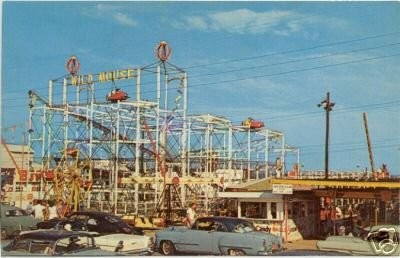
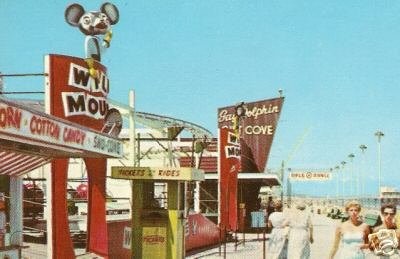
According to RCDB, the Schiff Wild Mouse was the same model that was installed at multiple well-known parks across the country in the late 1950s and early 1960s, including Dorney Park, Cedar Point, Elitch Gardens and Quassy. The Wild Mouse closed in 1966 and was relocated to Folly Beach Pier in Folly Beach, SC. The closing of the Wild Mouse was just in time for Myrtle Beach’s newest (and currently oldest operating) amusement park, Family Kingdom (then known as Grand Strand Amusement Park) to open, just about a mile to the south of the Gay Dolphin on Ocean Boulevard.
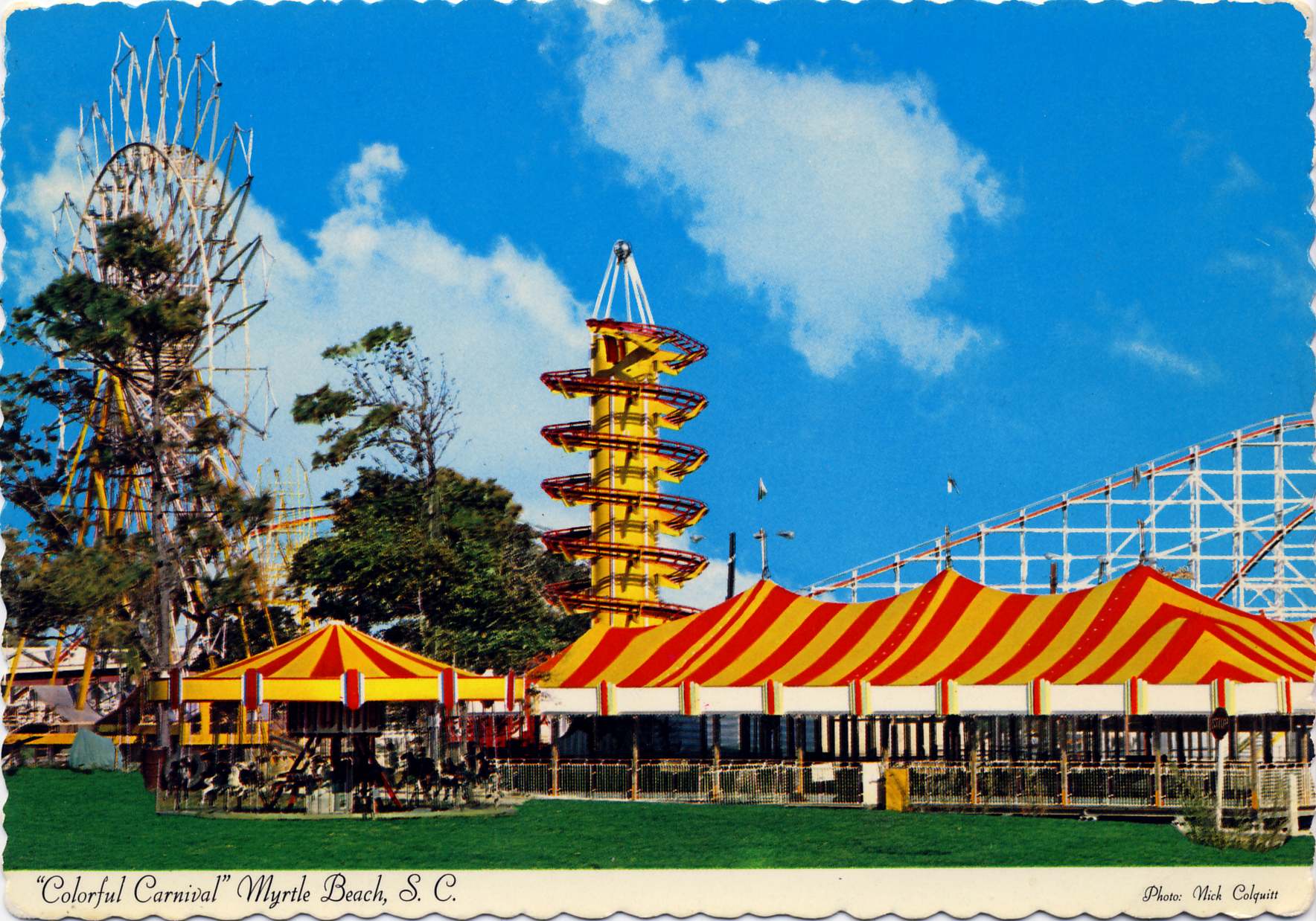
Grand Strand Amusement Park was the brain child of William M. Parker, one of three partners responsible for Miracle Strip Amusement Park in Panama City, Florida. When it opened in 1966, the park featured one roller coaster, the historic Swamp Fox. According to the American Coaster Enthusiasts, the roller coaster took its name from famous American Revolutionary War hero Francis Marion for his daring raids against British troops through the swamplands of South Carolina. A Philadelphia Toboggan Coasters-manufactured design by legendary coaster designer John C. Allen, Swamp Fox features a figure-eight layout that takes riders through a half a mile of track. As the coaster climbs to its peak height of 75 feet, riders are treated to a panoramic view of the Atlantic Ocean and the surrounding area.
Several years later, though the exact date is unknown (RCDB says 1968), Grand Strand Amusement Park opened a second roller coaster, Toboggan, named after the coaster model from Chance Rides, the ride’s manufacturer. Standing 45′ tall with 450′ of track, Toboggan only lasted at the seaside park for a few years, closing sometime in the 1970s.
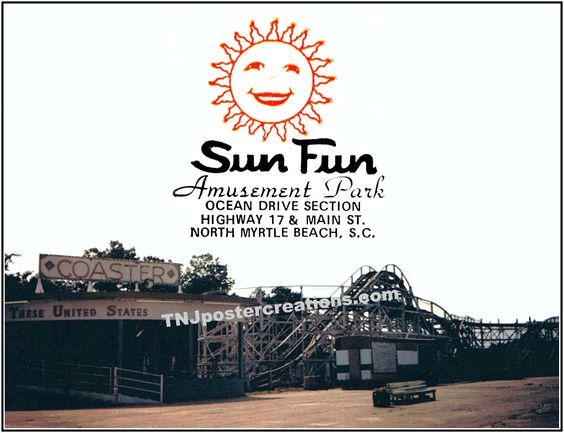
16 miles north of Family Kingdom, another small amusement park would open around the same timeframe, and would have a small wooden coaster of its own. The Sun Fun Amusement Park was located in North Myrtle Beach, and its signature roller coaster, like Comet Jr. before it, was also a product of the now-defunct National Amusement Device Co. Originally open in 1970, the roller coaster went by a number of names according to RCDB, including the mostly generic “Wildcat” and “Coaster.” Those names aside, Sun Fun eventually went with a name that is among my favorite coaster names of all-time; “These United States.” Sun Fun park also operated a kiddie coaster for a few years prior to the park’s closing in 1986.


South of Myrtle Beach in Surfside Beach, the owners of Magic Harbor also had a few roller coasters of their own. While much of the specific early timeline of the park is unknown, the park went through several owners, including the ownership group behind Blackpool Pleasure Beach, who turned Magic Harbor into a British themed amusement park. Early roller coasters at the park included Black Witch, which appears to be a Galaxi-style roller coaster, and Caterpillar, a Wacky Worm. In 1975, Magic Harbor opened an Arrow Corkscrew coaster that operated at the park for a short time, before making the short trek up Highway 17 to the Pavilion, where it re-opened in 1978.
1980-2007: Roller Coaster Boom, Real Estate Boom, Roller Coaster Bust
The opening of Corkscrew at the Pavilion in 1978 kicked off a series of new coasters in the Myrtle Beach area over the next decade, all coming to the Pavilion. Following Corkscrew, the park also installed an S.D.C. Galaxi sometime in the mid/late-1980’s or early 1990’s.
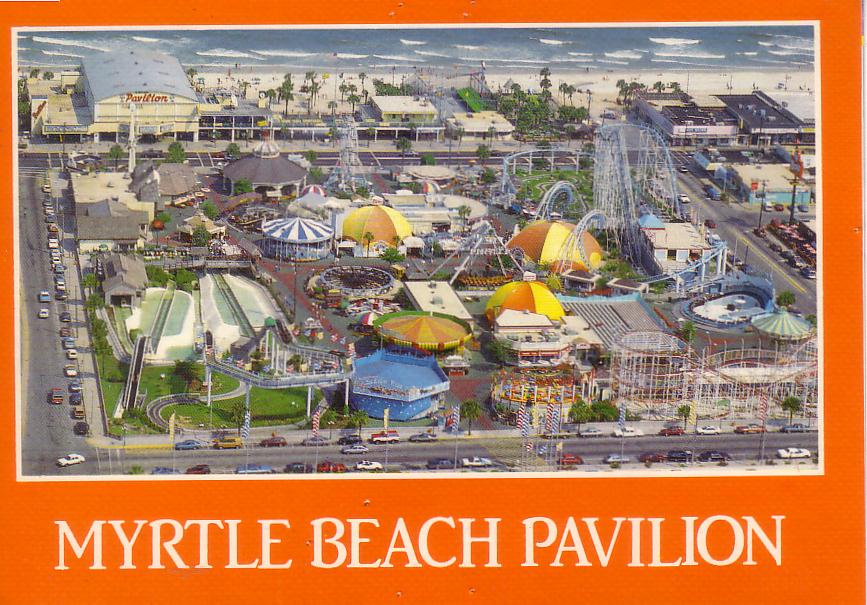
Not much is known about the history of this roller coaster, as even RCDB lists its opening date sometime in the range of 1985-1994. It was thought to be moved to the park from Kings Dominion, after their roller coaster of the same name closed in 1983, but that information is inconclusive at this point. Galaxi would eventually close in 1997.
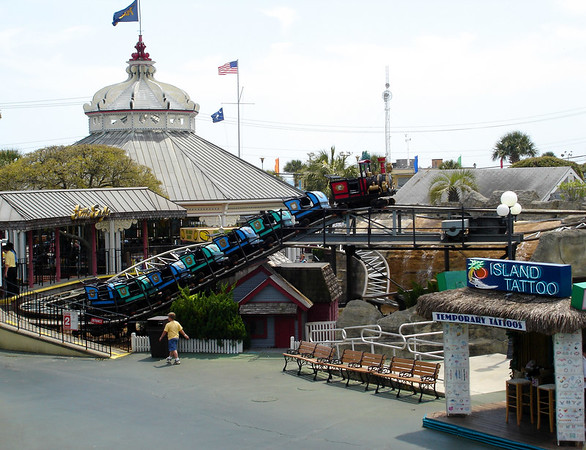
In 1986, the Pavilion added another roller coaster, Little Eagle, a family train-themed roller coaster from MACK Rides. Little Eagle was only MACK’s third roller coaster installation in the United States, and 15th coaster overall.
North Myrtle Beach’s Windy Hill Water Boggan park, which originally opened in 1976 got into roller coasters (assuming we can call them that) for a few years, with the addition of Express in 1989. Predominantly known for their water slides, Water Boggan constructed The Express, atop a multi-water slide tower. Built by Canadian ride manufacturers Bailey Rides, Express was an “auto-sled” where two-riders would go down a roller coaster track in a sled-like vehicle. The riders would then exit at the bottom and the sled was transported back to the top of the tower for the next riders. Express would close sometime between 1996 and 1999.
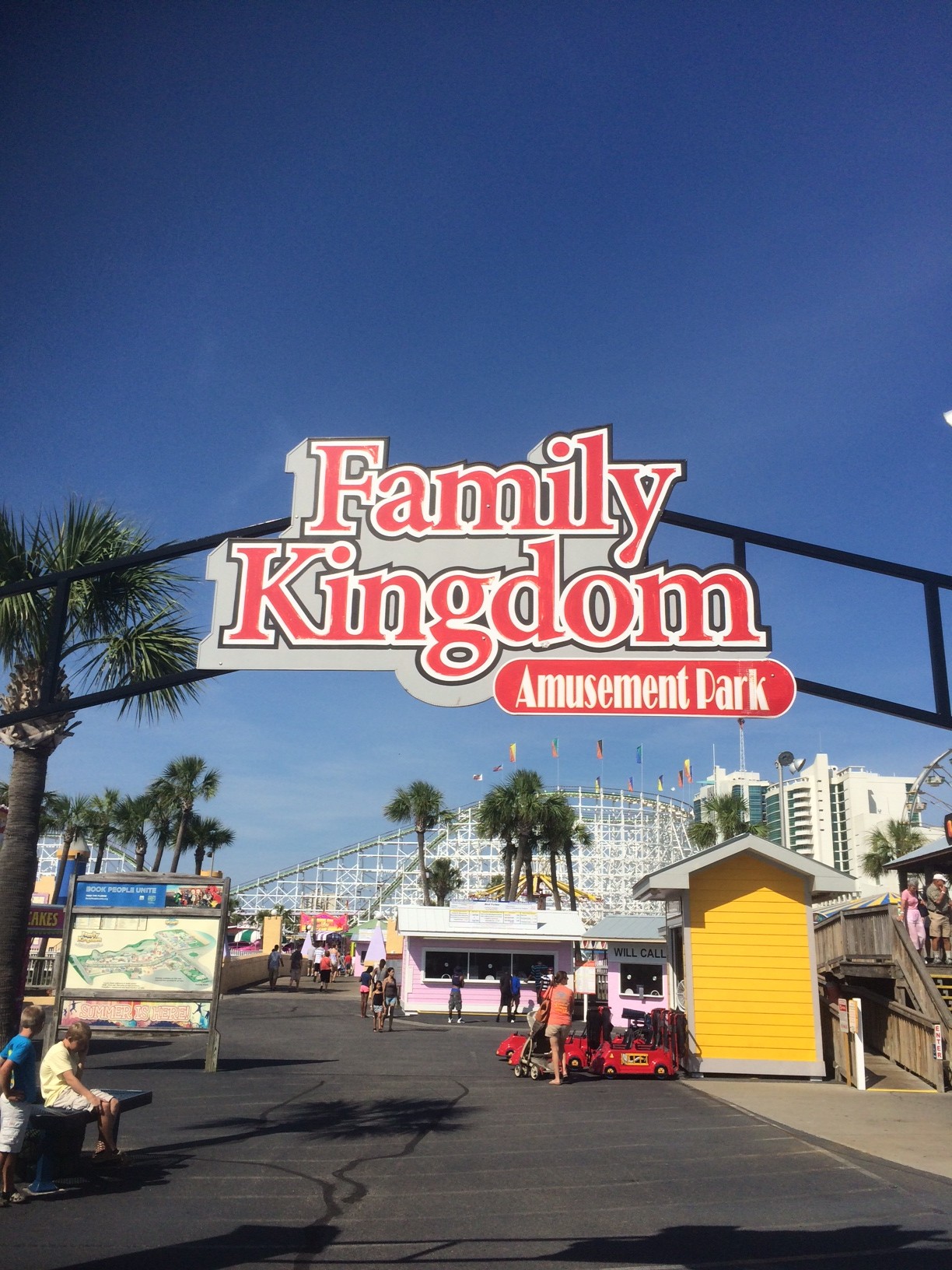
In September of 1989, the Category 4 Hurricane Hugo made landfall in South Carolina, and caused a significant amount of damage to Myrtle Beach and the surround areas. Among the properties significantly damaged by the storm were the Grand Strand Amusement Park and the Swamp Fox. Both remained closed for the next two seasons. The Ammons family, owners of the nearby Sea Mist Oceanfront Resort, purchased the closed park in 1991 and began restoration of the facility, which would finally reopen in June of 1992. They hired noted ride consultant and coaster builder John Hinde, who once worked with John Allen, to rebuild Swamp Fox to its original glory. The park would change names from Grand Strand Amusement Park to Family Kingdom as part of the rebuilding and new ownership.
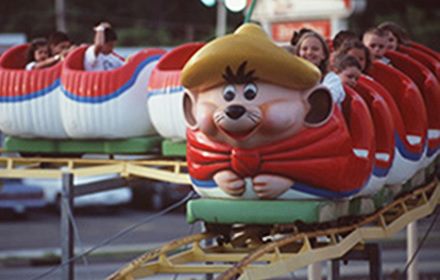
After reopening, Family Kingdom installed a second roller coaster at the park, then known as Speedy Gonzales (now known as Kiddie Coaster), in 1994. Still operating at the park today, Kiddie Coaster is a hard-to-obtain credit for enthusiasts, as the park only allows children to ride the “Big Apple” model from D.P.V. rides. So unless you were lucky enough to ride it in your youth, you may never get to!

Over at the Pavilion, the long (or short, still TBD) standing Galaxi coaster was removed in 1997, to make way for a new roller coaster at the seaside park, Mad Mouse, which would open in 1998. The first of four compact Wild Mouse designs from Arrow Dynamics to open (the other three at Valleyfair, Michigan’s Adventure, and California’s Great America), the roller coaster was not the only Wild Mouse to open in Myrtle Beach in the late 1990’s.
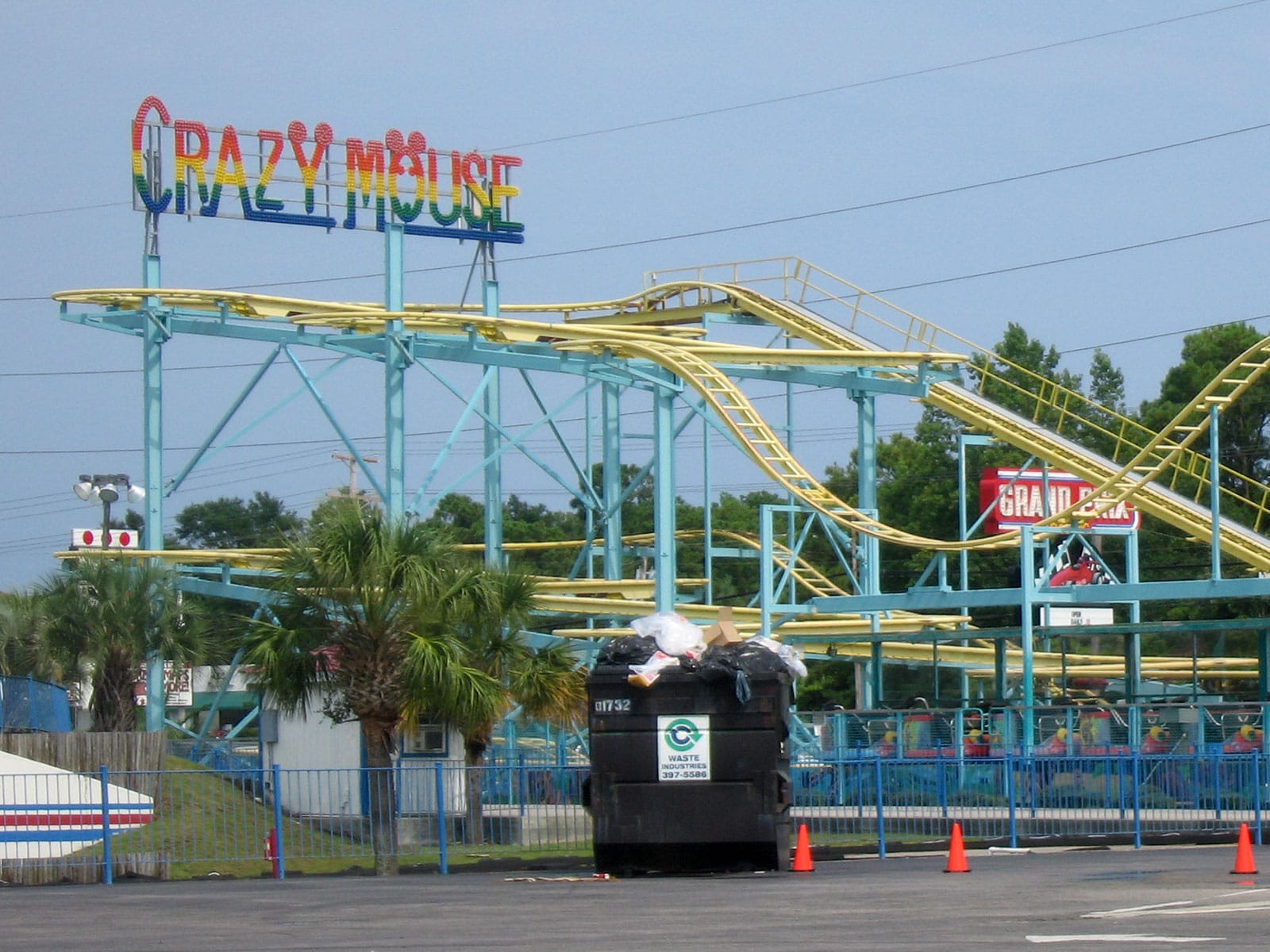
Longtime area go-kart attraction Myrtle Beach Grand Prix in North Myrtle opened their first roller coaster, Crazy Mouse, in 1999. Unlike the Arrow model located 12 miles to the south, the Grand Prix’s Crazy Mouse featured cars that would spin, and was actually the same model of Reverchon Spinning Wild Mouse that opened two months prior at Kennywood. The Grand Prix would also add a Wacky Worm sometime prior to 2002, but the date is not known.
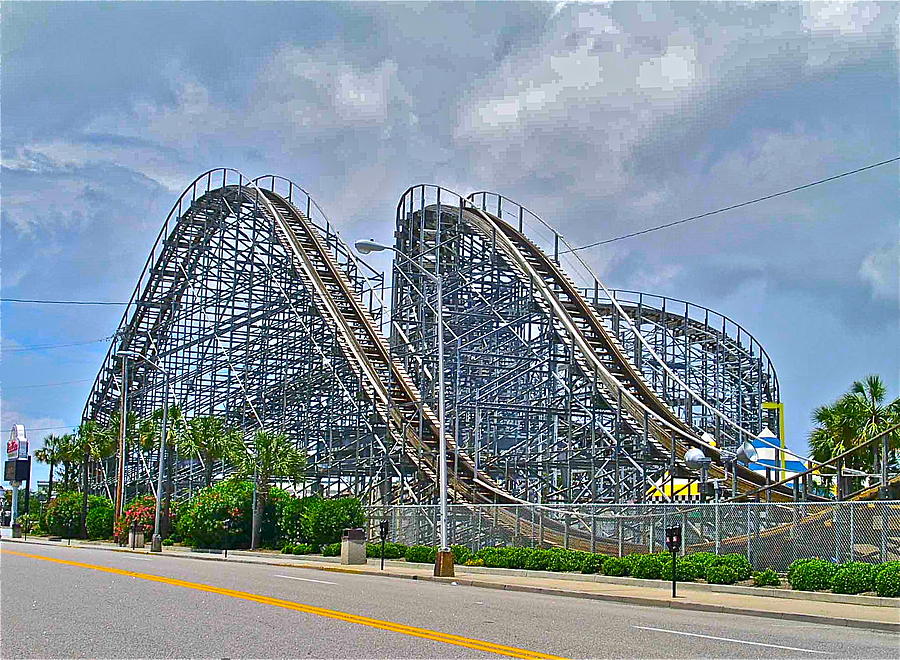
Also in 1999, the Pavilion retired Corkscrew, which would eventually move to its third home at Colombia’s Salitre Magico, where it operates to this day as Montaña Rusa. The retirement of Corkscrew was extremely necessary for the Pavilion, because the park needed the space for its largest investment to date, Hurricane: Category Five, a wooden coaster from Custom Coasters International, which would open in 2000. It was the tallest, fastest and longest wooden coaster in South Carolina. Featuring 3,800′ feet of wooden track on top of steel supports, Hurricane featured a 100-foot drop and reached speeds of 55mph. The two trains were manufactured by Gerstlauer.
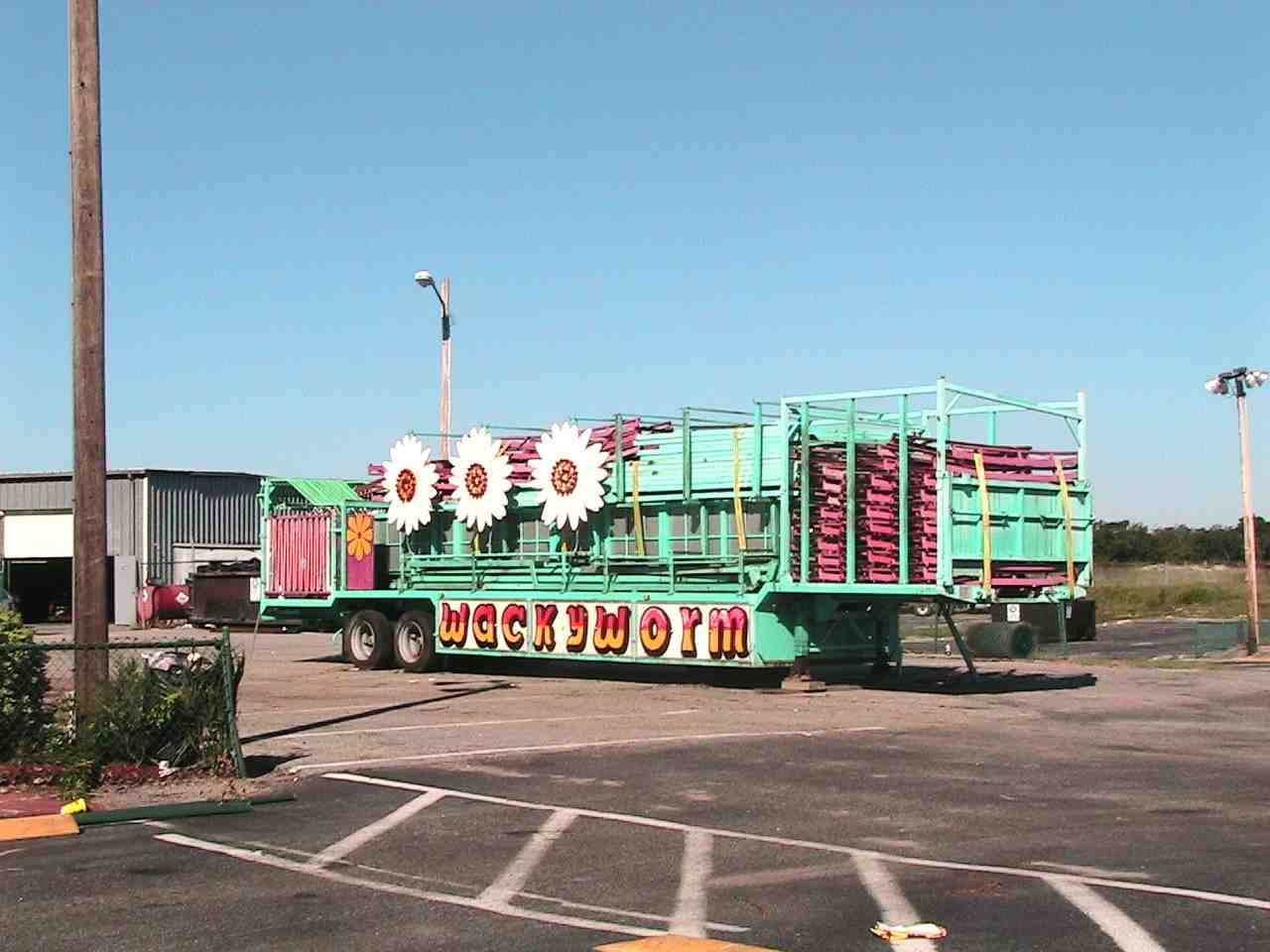
Hurricane would be the last roller coaster to open in the area for nearly a decade, and unfortunately, from 2000-2007, there were more roller coasters that closed than opened in Myrtle Beach. In 2006, there was a real estate bubble that was about to burst, and in a tightly-packed tourist destination like Myrtle Beach, land was a premium resource. The Myrtle Beach Grand Prix, along with its Crazy Mouse and Wacky Worm, closed following a “Last Ride” event on Sept. 16, 2006. Crazy Mouse ended up at Wild West World, a park that operated in Kansas for two months, before being relocated to Norway’s Kongeparken, where it is now known as Bukkerittet. The Grand Prix’s Wacky Worm’s fate was unclear.
Citing financial instability, the owners of the Pavilion announced that the park would also close, and hosted its own “Last Ride” event one week later, taking three more roller coasters out of Myrtle Beach in the process.
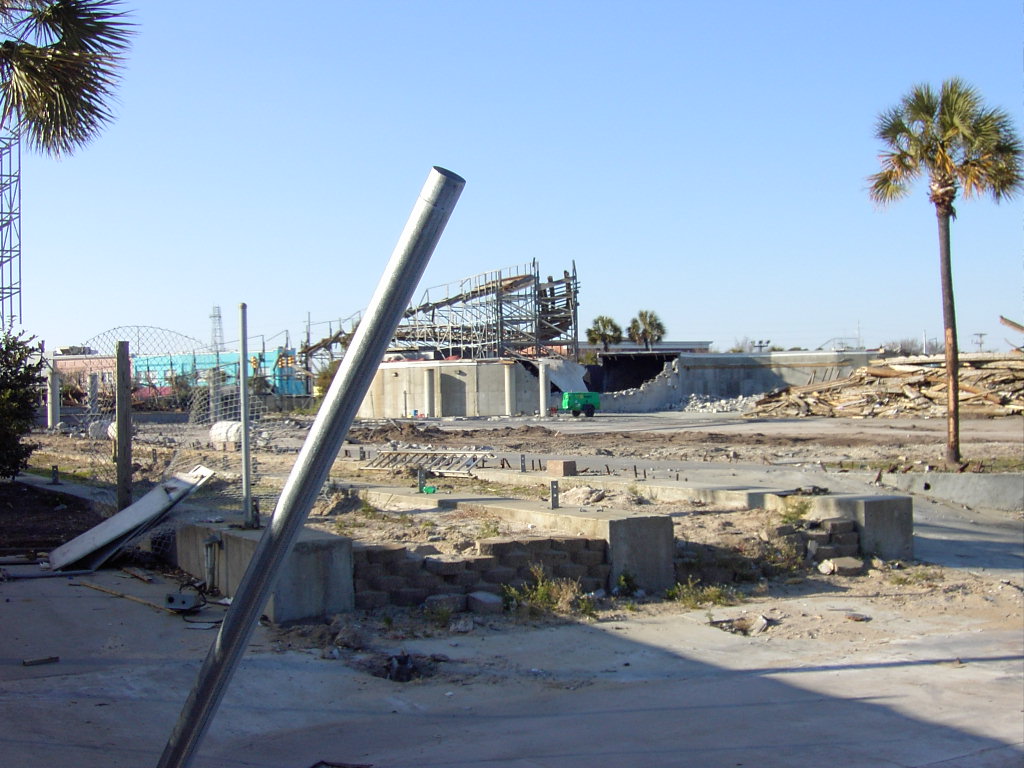
While several of the Pavilion’s attractions were moved to the “Pavilion Nostalgia Park” at nearby Broadway at the Beach or other area parks, including Little Eagle and Mad Mouse, which sadly never reopened after being transferred to NASCAR SpeedPark/Broadway Grand Prix, other rides, including the Hurricane, were completely demolished in 2007.
2008-2010: Welcome Back My Friends, To The Show that Never Ends
As Will Ferrell said at the end of Wedding Crashers, with every death, comes rebirth. About three miles inland from the demolition of Hurricane at the Pavilion, Myrtle Beach’s largest amusement park to date was under construction in 2007. Known by its tagline of “Where Rock Comes to Play,” Hard Rock Park would feature five roller coasters within the park’s 55-acre footprint.
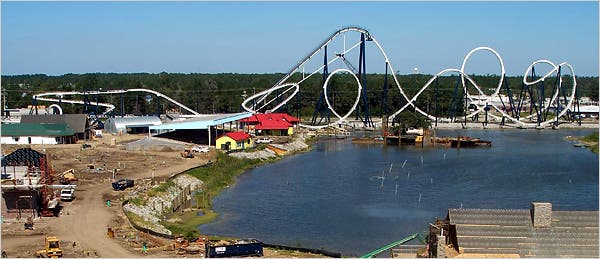
Led Zeppelin: The Ride was a sit-down steel coaster from Swiss designers Bolliger & Mabillard that featured blimp-themed trains with on-board audio. During the course the attraction, including a multi-media pre-show and the roller coaster’s 3,700′ of track, riders were treated to a full recording of Led Zeppelin’s Whole Lotta Love. According to Theme Park University, listening to the whole song was a condition of the contract to secure Led Zeppelin’s likeness for the coaster.
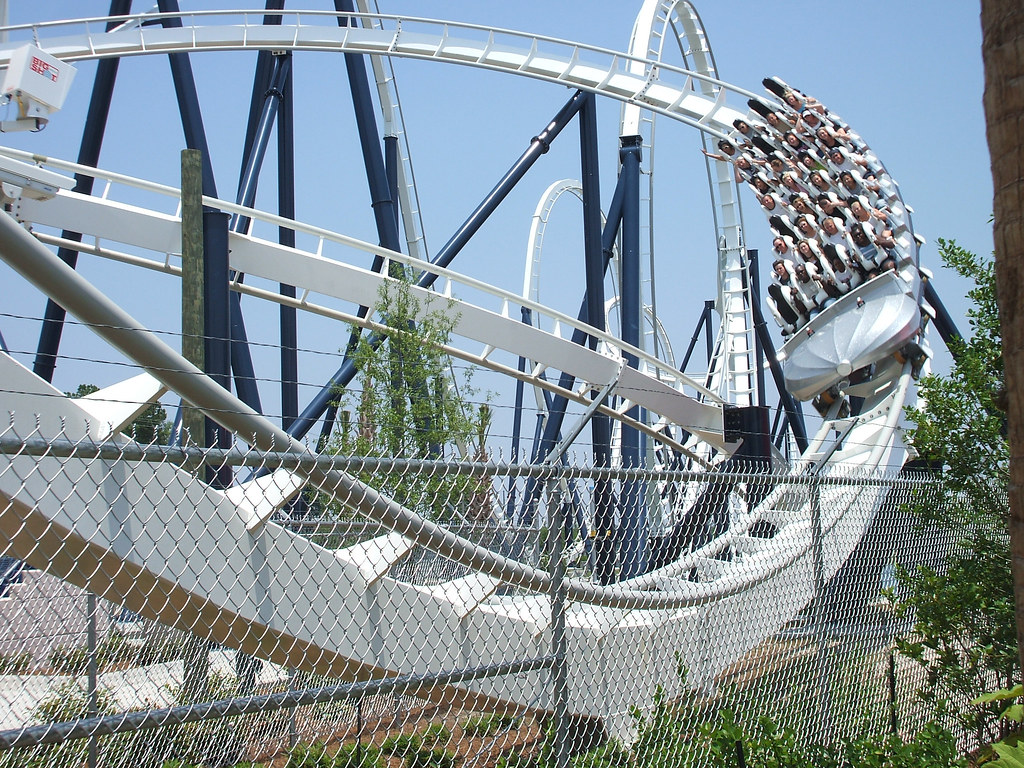
Photo: Flickr
Led Zeppelin the ride featured six inversions, including a 120′ tall loop, a 95′ tall cobra roll, a 75′ tall Zero-G roll, an additional loop, and a corkscrew. It topped out at speeds of 65 mph, and like the coaster’s 32-passenger train, the ride’s station also had a “Zeppelin” theme that was visible from outside the park.
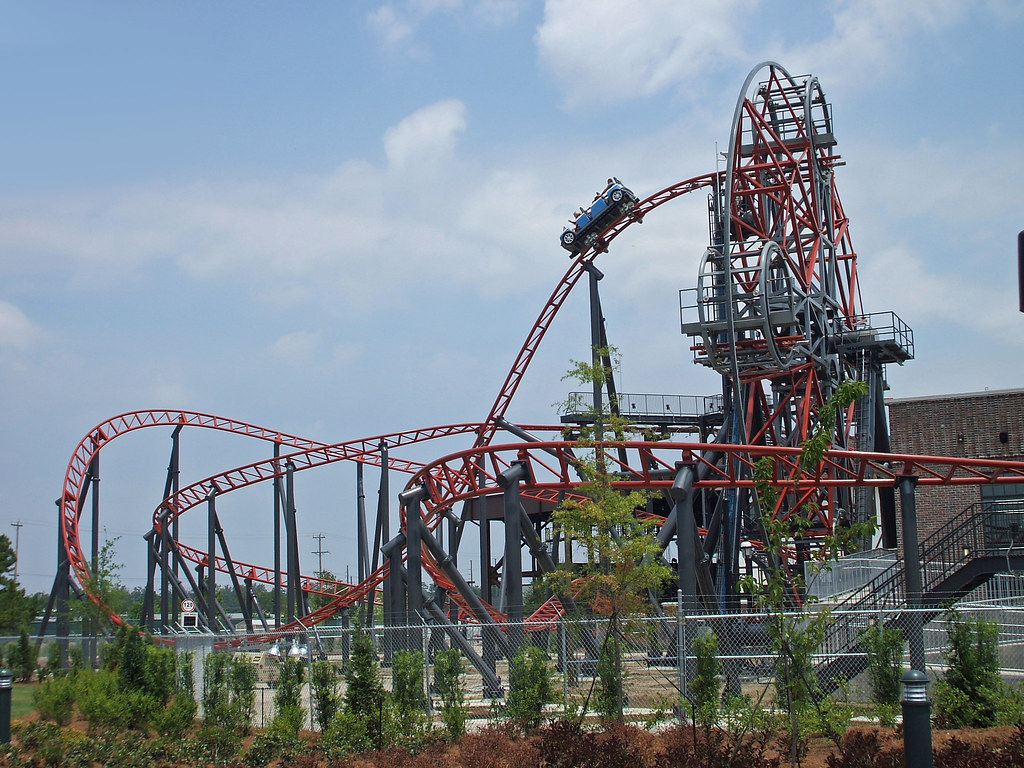
Photo: Flickr
Moving in a clockwise direction around the park, the next roller coaster that guests encountered was the Premier Rides’ designed Maximum RPM. Featuring the world’s only Ferris Wheel-style Coaster Lift, riders were seated in vehicles that resembled Mini-Coopers, and flew around the relatively short track as 80’s music played. Maximum RPM also featured a karaoke queue line, where guests could let their inner rock star shine while waiting to board the attraction.
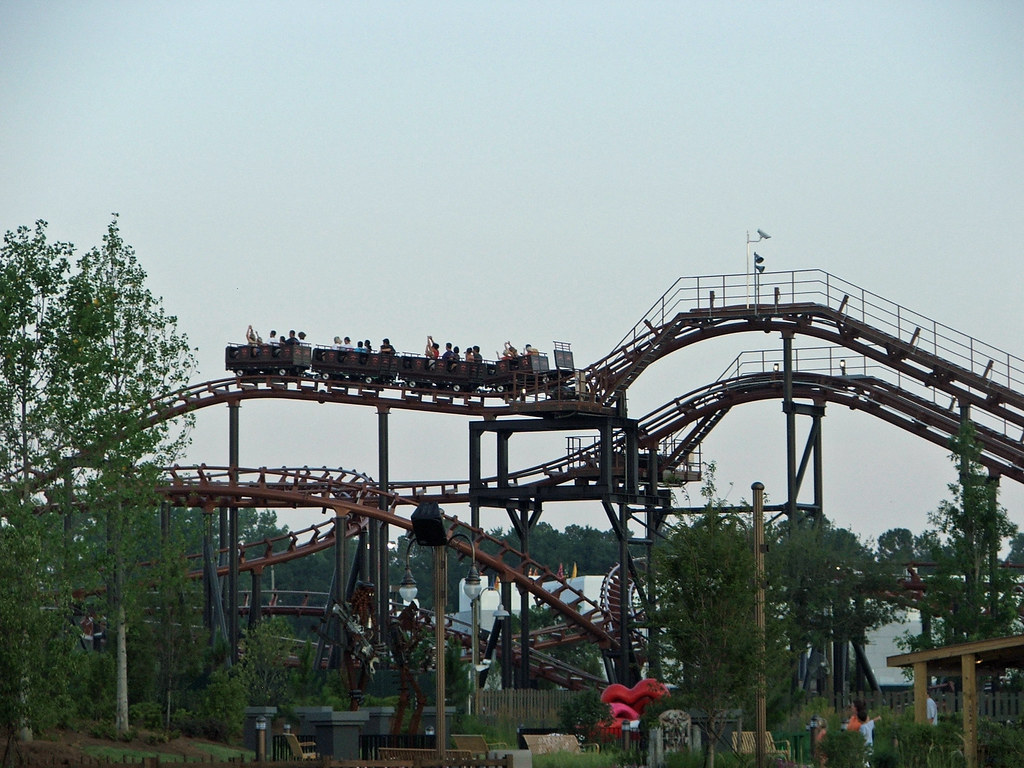
Photo: Flickr
Eagles: Life in the Fast Lane was a junior Mine Train from Vekoma, also equipped with on-board audio that played the titular track from the classic rock band. Set in an abandoned lumber mill, the coaster featured 2,200′ of track and reached heights of 50′. According to RCDB, it’s similar to a standard Vekoma Mine train, but several elements are mirrored.
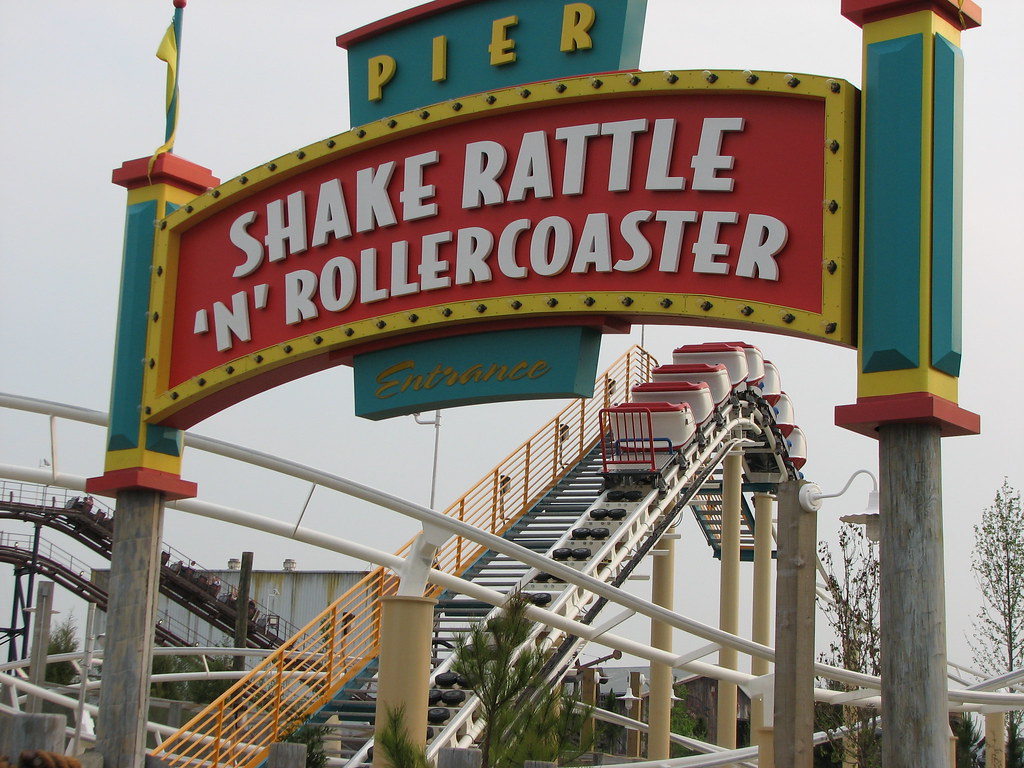
Hard Rock Park also featured two coasters that were geared more towards families: Shake, Rattle and Rollercoaster, from Vekoma, and Slippery When Wet, a single rail suspended coaster from Premier Rides that featured water cannons manned by non-riders.
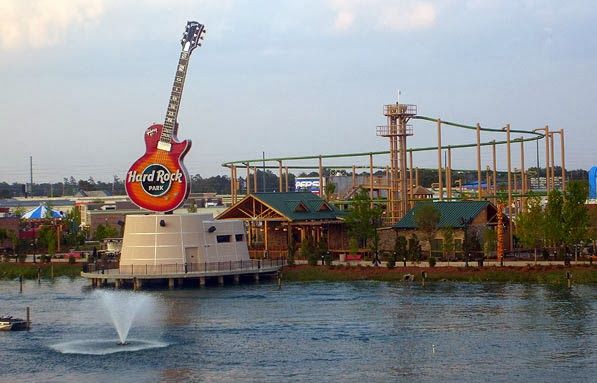
While we’re focused solely on the roller coasters in the area for this article, the saga of Hard Rock Park is certainly one that deserves its own article, and has been brilliantly documented in a multi-article series by Theme Park University. (Seriously, check that out.) Long story extremely short, Hard Rock Park opened in the middle of a recession, and didn’t even make it a full season before declaring bankruptcy. In 2009, the park reopened as the more generic Freestyle Music Park, but the licenses that Hard Rock had acquired for the roller coasters did not renew under new ownership.
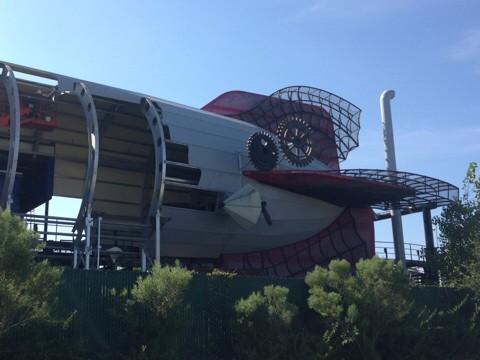
Led Zeppelin: The Ride kept its blimp-esque station and cars, but was renamed the Time Machine, and the on-board audio was changed from Whole Lotta Love to a randomized mashup of songs from different decades from the 1960s to the 2000s. Maximum RPM became Round About. Eagles Life in the Fast Lane became Iron Horse, now featuring audio of Charlie Daniels’ Devil Went Down to Georgia. Slippery When Wet became Soak’d, and Shake Rattle and Rollercoaster became Hang Ten.

Unfortunately for theme park fans everywhere, Freestyle Music Park could not rebound in its one season of operation, and the park closed again, this time for good. While Led Zeppelin/The Time Machine, Life in the Fast Lane/Iron Horse, and Shake Rattle & Rollercoaster/Hang Ten all found new homes in Vietnam, Maximum RPM/Round About and Slippery When Wet/Soak’d were dismantled, rebuilt, but never operated at Sun World Danang Wonders in Vietnam.
2009-Present: The “Modern” Era. What’s Next?
Since Freestyle Music Park’s closure in 2009, Myrtle Beach has not really been a “destination” location for thrill seekers, unless you’re a die-hard credit counter.
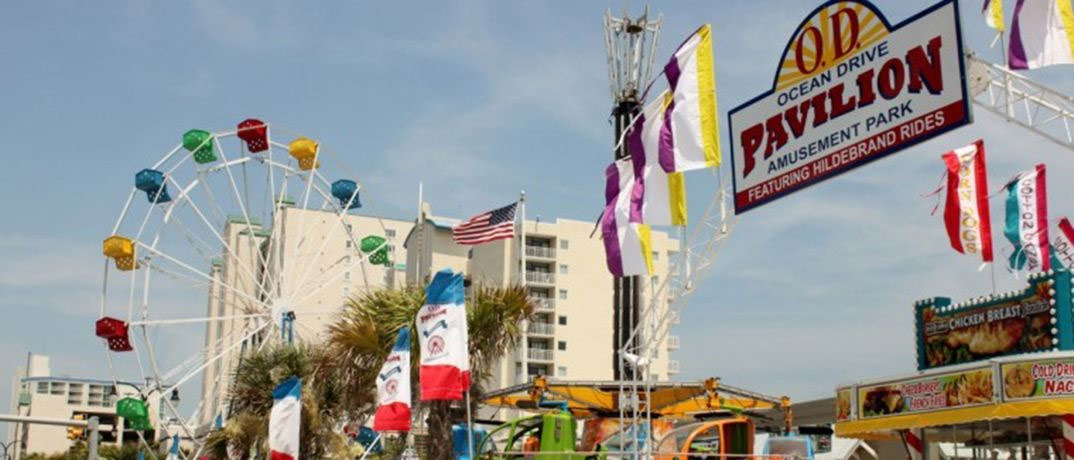
While five smaller off-the-shelf roller coasters – a Schiff kiddie coaster, a Go-Gator, a Wisdom Rides family coaster, a Wacky Worm, and a Zyklon, operated at North Myrtle Beach’s O.D. Pavilion Amusement Park from 2009-2016 (and none for more than four years), the park feels more like a permanent carnival installation than an amusement park.
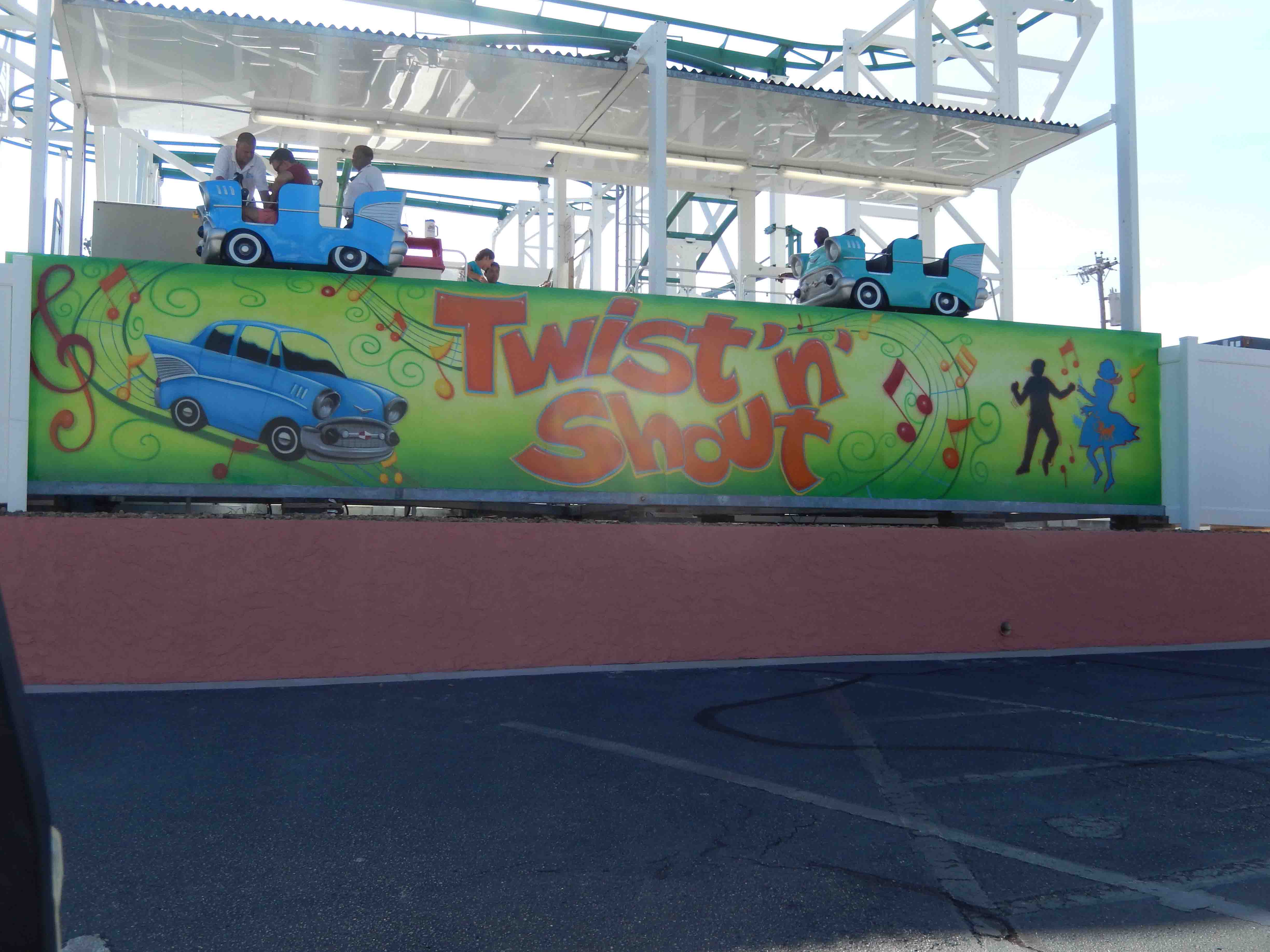
Family Kingdom built their own Wild Mouse, Twist ‘n’ Shout in 2013. The Zamperla zig-zag came to the park from Arkansas’ Magic Springs (2000-2012) and also operated at Gillian’s Wonderland Pier for year (1999) before coming to Myrtle Beach. The ride vehicles are themed to classic cars, and fit in perfectly with Family Kingdom’s environment.
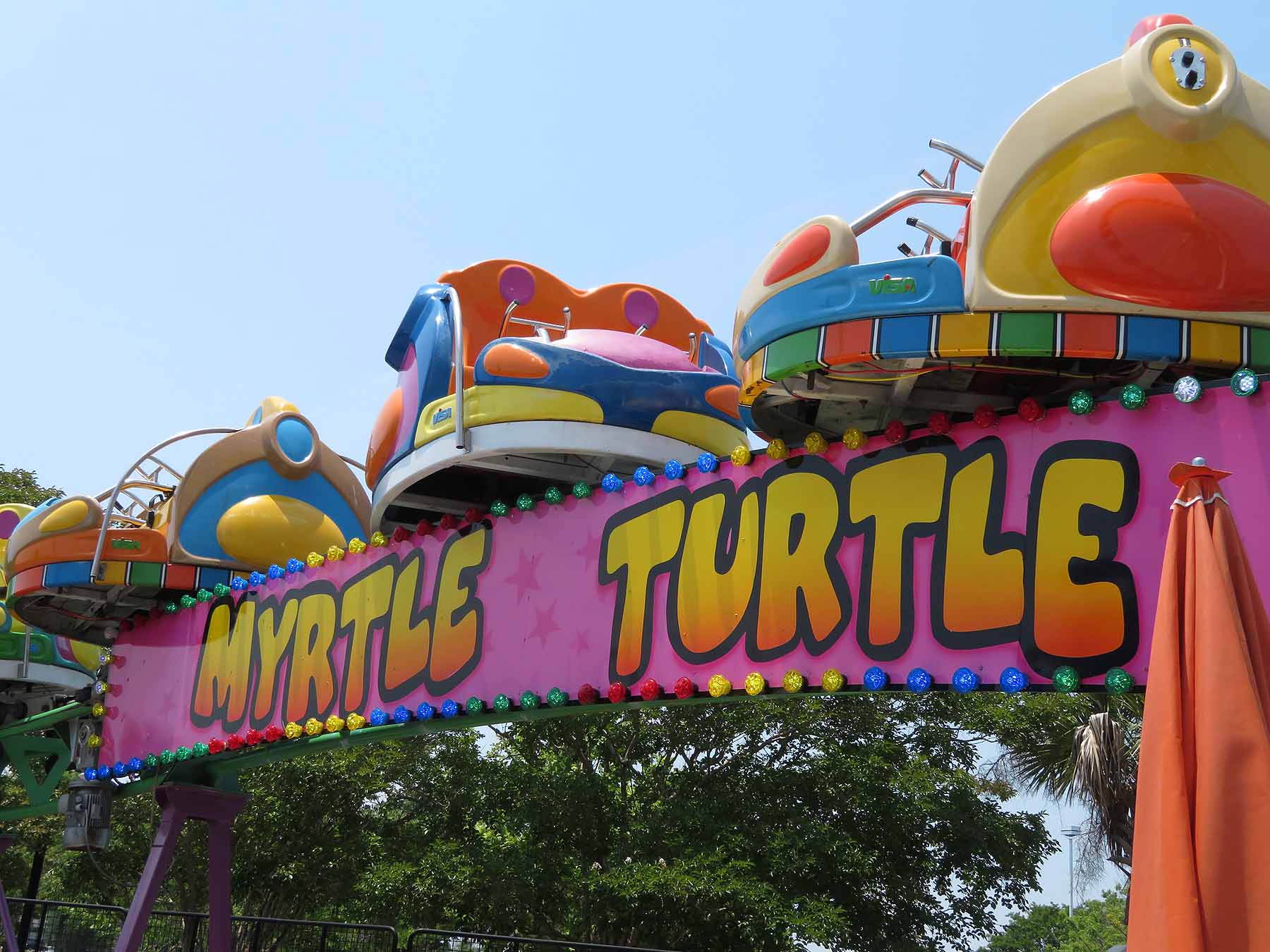
The following year, Broadway at the Beach’s Pavilion Park (not to be confused with the shuttered home of Hurricane: Category Five) opened Myrtle Turtle, one of the first ever park model spinning coasters from SBF-Visa to open. Quickly becoming a staple at small parks and family entertainment centers across the country, the SBF-Visa Spinners can pack a little bit of a punch if the trains are weighted in a certain manner!
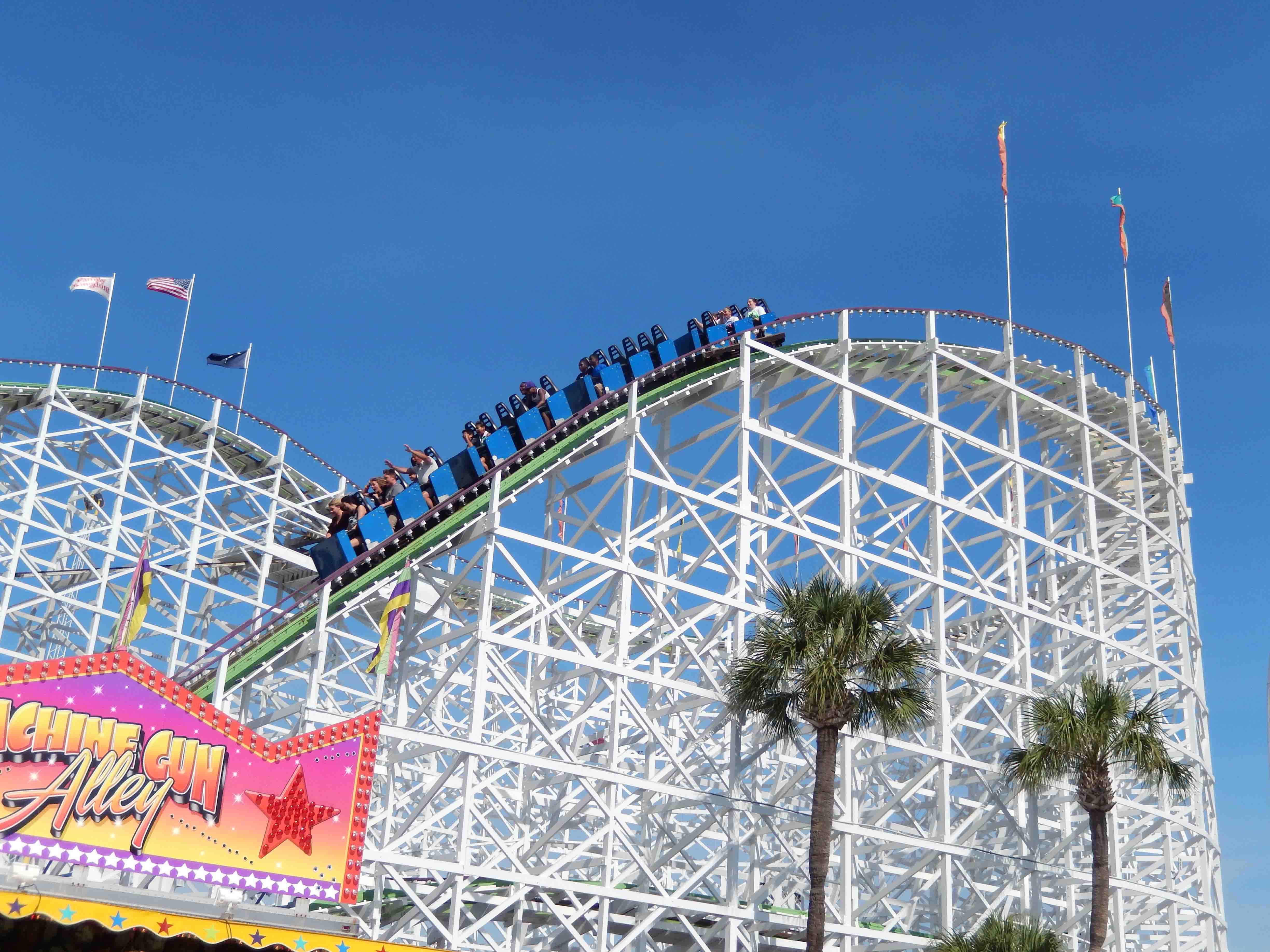
For several years, Family Kingdom’s three roller coasters – Swamp Fox, designated an ACE landmark in 2016, Kiddie Coaster, and Twist ‘n’ Shout, along with Myrtle Turtle, were the lone roller coasters in the tourist destination. The land occupied by many of the former attractions mentioned has been developed into retail, housing, or in the case of the Pavilion, a combination music festival venue and zip-line park. For years, thrill seekers in the Carolinas wondered what would be next, and if Myrtle Beach would ever see high-level thrills again.
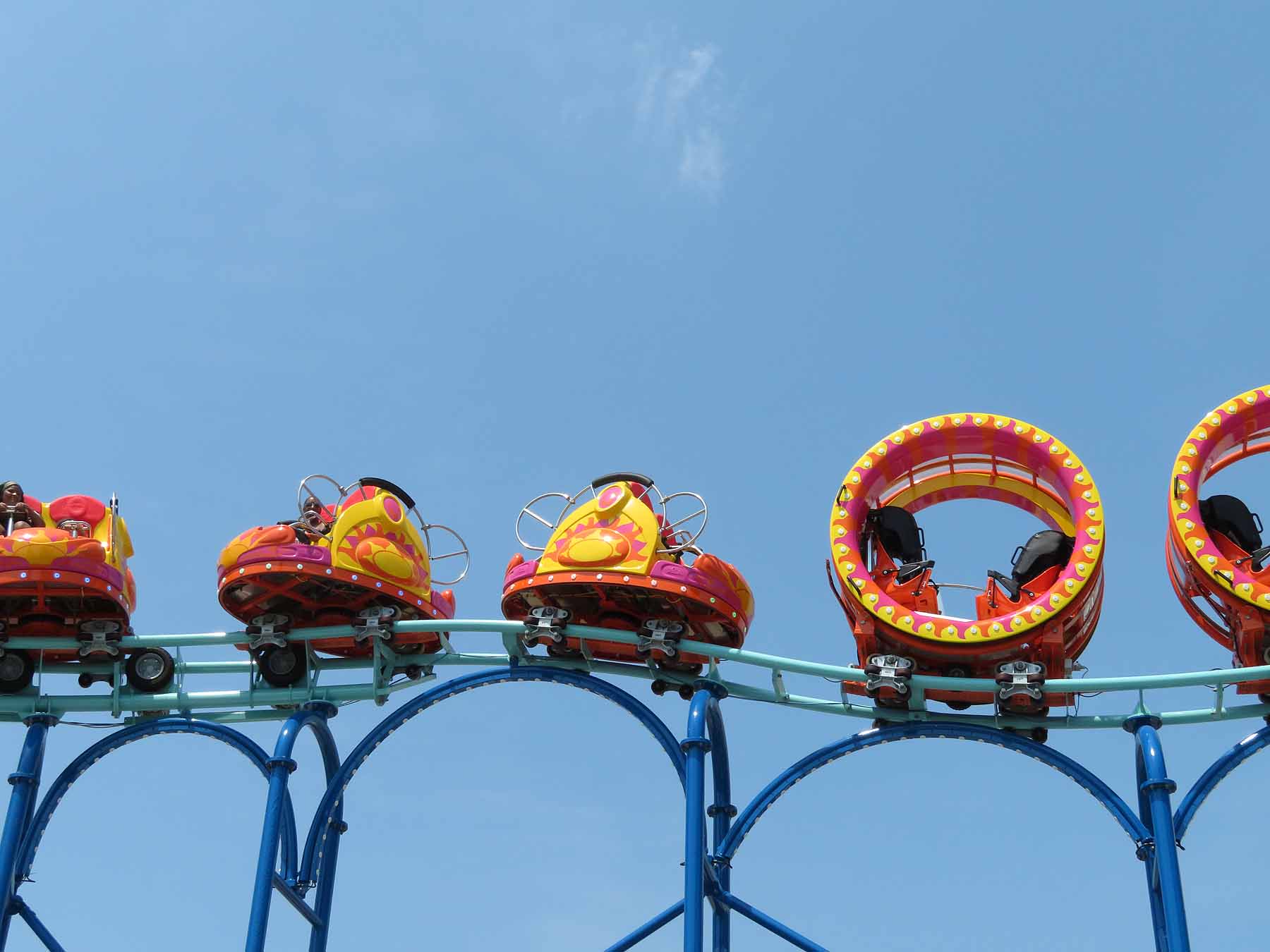
Following a seven-year roller coaster drought, Myrtle Beach’s newest coaster, Fun in the Sun, opened at The Funplex Myrtle Beach in May 2021. One of just three “Big Air” coasters from SBF-Visa in the United States as of this writing, Fun in the Sun features a unique train consisting of three of SBF-Visa’s signature spinning cars, but also two circular ride vehicles that are best recognized by coaster enthusiasts as “hamster wheels.” Fun in the Sun is the longest SBF-Visa Big Air coaster, and one of seven attractions at the compact theme park, located on Ocean Drive.
While The Funplex is still “new,” it proves that there is the potential and demand for roller coasters in Myrtle Beach. If you’re in the area, be sure to visit Family Kingdom, Broadway at the Beach, and now The Funplex, in order to get your coaster “fix.” If the past has proven anything, roller coasters in Myrtle Beach, much like the Atlantic Ocean on its coastline, come in waves. We can’t wait to see what’s next for the area!

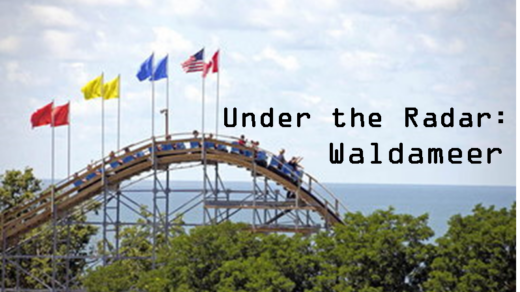
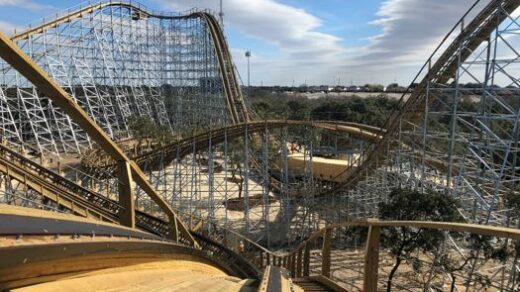
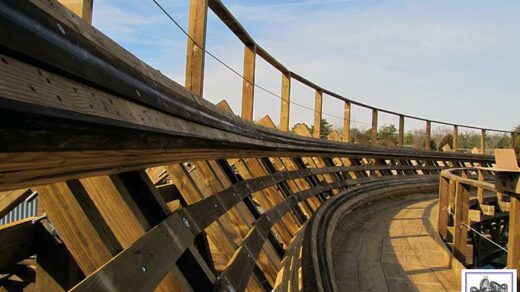



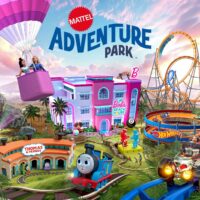





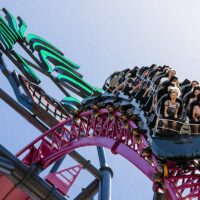
What about Pirateland ? Located in between Myrtle Beach and Surfside just south of the main entrance to the Old Myrtle Beach Air Force Base. It’s now a RV Park but it definitely had as I remember at least two roller coasters.
He covered the park. It wasn’t Pirate land , that’s the campground that now sits there.